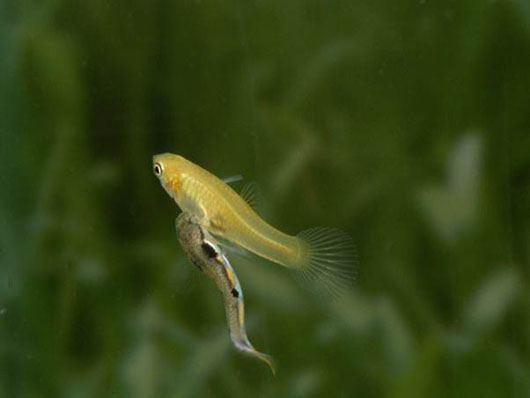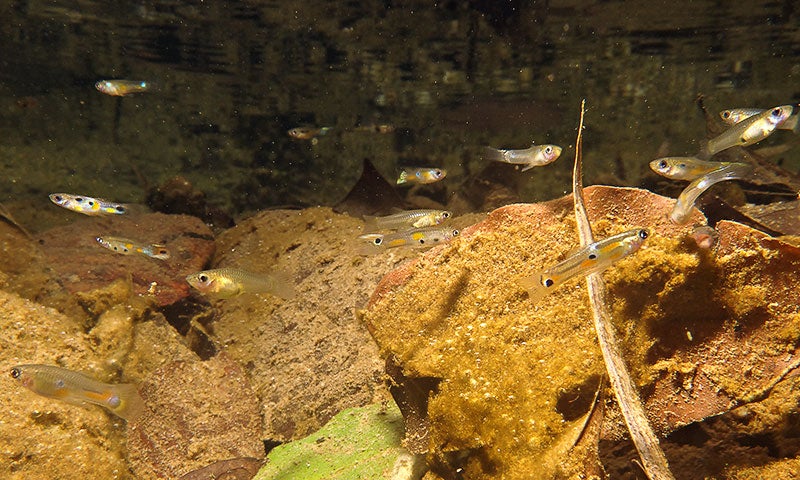Guppies, scientifically known as Poecilia reticulata, are small, colorful freshwater fish that are native to the tropical and subtropical regions of Central and South America. They are one of the most popular and widely distributed aquarium fish worldwide, but have you ever wondered where they can be found in the wild?

Credit: phys.org
Guppy Habitat in the Wild
Guppies are typically found in slow-moving or still waters such as streams, rivers, ponds, and lakes in their natural habitat. They prefer warm, shallow waters with plenty of aquatic vegetation where they can hide from predators and find food.
These fish are highly adaptable and can thrive in a variety of water conditions, including both freshwater and slightly brackish water. Their natural habitat often consists of densely planted areas with a mix of open spaces and hiding spots to provide them with protection.
Geographical Distribution
Guppies are native to countries such as Barbados, Brazil, Guyana, Trinidad, and Venezuela. In these regions, they can be found in various bodies of water, including both natural and man-made environments. The warm climate and abundant vegetation in these areas create the perfect conditions for guppies to thrive.
One of the most well-known locations where guppies are found in the wild is the island of Trinidad, off the coast of Venezuela. Trinidad is home to diverse ecosystems, including rivers, streams, and ponds, where guppies can be commonly spotted.
Behavior in the Wild
In their natural habitat, guppies exhibit interesting behaviors that have evolved over time to help them survive and thrive. These fish are known for their social nature, often forming shoals or groups to increase their chances of survival against predators.
Guppies are also prolific breeders, with females giving birth to live young instead of laying eggs. This reproductive strategy has helped them rapidly populate various water bodies in the wild.
Threats to Wild Guppy Populations
While guppies are known for their adaptability and resilience, they still face threats in their natural habitat. Human activities such as deforestation, pollution, and the introduction of non-native species can have a negative impact on wild guppy populations.
Additionally, changes in water temperature and quality due to climate change can disrupt the delicate balance of ecosystems where guppies reside, putting them at risk of decline or extinction in certain areas.

Credit: news.ucr.edu
Conservation Efforts
Conservation efforts are underway to protect wild guppy populations and their habitats. Initiatives such as habitat restoration, water quality monitoring, and the establishment of protected areas help safeguard these fish and the ecosystems they depend on.
By raising awareness about the importance of preserving the natural habitats of guppies and other aquatic species, conservationists aim to ensure the long-term survival of these fascinating fish in the wild.
Conclusion
In conclusion, guppies are found in the wild in the tropical and subtropical regions of Central and South America, where they inhabit a variety of freshwater environments. Their colorful appearance, social behavior, and adaptability make them a fascinating species to study and observe in their natural habitat.
While wild guppy populations face threats from human activities and environmental changes, conservation efforts play a crucial role in protecting these fish and preserving their ecosystems for future generations to enjoy.
